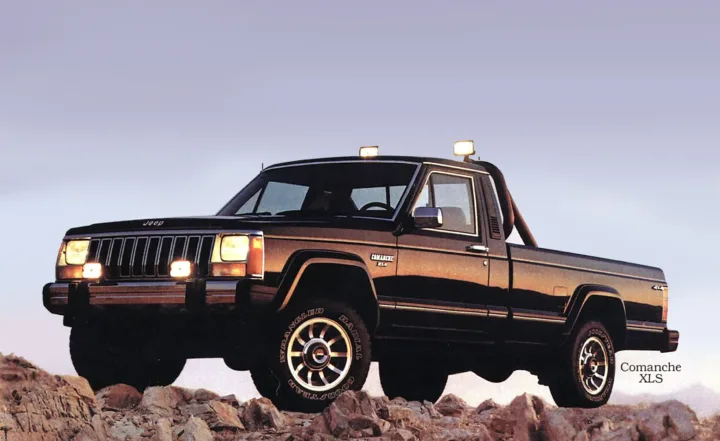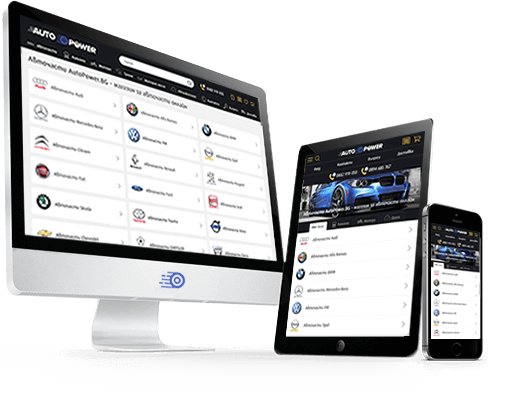40 years ago, the first diesel Jeep debuted
Although diesel engines are more efficient and economical than gasoline engines, they have never been popular in North America. This changed somewhat in the 1970s, when oil crises became a serious threat to cheap gasoline. But even then, the popularity of diesel cars was only a temporary phenomenon. In 1978, Oldsmobile offered the first American passenger car with a diesel engine, which, however, was a commercial failure, but besides it, several other similar experiments were made, the most interesting of which was related to Jeep magazin de piese auto online.

The history of the diesel Jeep began in the first half of the 1960s, when the company offered the option of equipping the CJ-5 and CJ-6 models with a British 3.2-liter Perkins diesel engine with a capacity of 62 hp. A little later, when Jeep was already owned by American Motors Corporation (AMC), this idea was revived for a short time. Between 1980 and 1982, the company's plant in Ohio produced limited quantities of diesel versions equipped with an Isuzu engine, but they were intended only for export.
The last and most ambitious attempt in this direction was made in 1985 at the initiative of Renault. At the same time, AMC maintained close partnership contacts with the French company, and this is how the idea of implementing its J8S turbodiesel unit in part of the American range arose. The all-aluminum four-cylinder engine weighs only 150 kilograms and has a very high compression ratio of 21.5:1. Despite the forced injection, however, it generates a power of only 85 horsepower, while the power of the standard 2.5-liter Jeep gasoline engine is 117 horsepower (therefore, there is nothing accidental in the fact that neither power nor fuel consumption is mentioned in the advertisements for this model). In addition, unlike its American counterparts, Renault's diesel engine has an upper camshaft and a timing belt. This (at least in theory) makes it smoother and quieter, but it also means more frequent maintenance, as the belt needs replacing every 80,000 kilometers.
Ultimately, the J8S became notorious for frequent gasket and head bolt failures. Notably, in addition to being powered by a mechanical fuel pump, without electronic control, the engine was also equipped with an intercooler, which set it apart from most turbodiesels then on the American market. In fact, at the time, the J8S was quite popular all over the world, finding application in a large number of Renault mass-produced passenger cars, as well as in the Fuego sports coupes, as well as in the Espace, Trafic and Master vans.
The first production Jeep models to be equipped with a diesel engine were the Cherokee and Wagoneer, introduced in 1985. A year later, the diesel Comanche pickup truck debuted. However, the diesel engine was only mentioned in passing in the texts of advertising brochures and was never shown in a photo. In its initial version, the diesel versions of the Jeep were available with a three-speed automatic or a five-speed manual transmission, but soon only those with a manual remained.
The short-lived market presence of the diesel Jeep was due to several factors. The main one was related to gasoline prices, which stabilized in the late 1980s, and interest in the fuel efficiency offered by diesel models dropped dramatically.
- 2025-08-29 - Another's joy (when we still had rally sport)
- 2025-08-28 - Mercedes Vito turns 30
- 2025-08-27 - Tatra 141: a well-known tractor in Bulgaria
- 2025-08-26 - Zastava 1100: the most successful variant of the Fiat 128
- 2025-08-25 - Suzuki Vitara - ready for Europe (retrospection)
- 2025-08-23 - Electric or petrol: Audi Q8 55 e-tron quattro vs Audi Q8 55 TFSI quattro (TEST)
- 2025-08-22 - The stylish VW and the hot Porsche (retrospection)
- 2025-08-21 - The first Ferrari-branded armored personnel carrier - created 45 years ago
- 2025-08-20 - French tow truck driver drags car 1.5 km along German highway
- 2025-08-19 - Suzuki GSX-R celebrates its 40th anniversary












